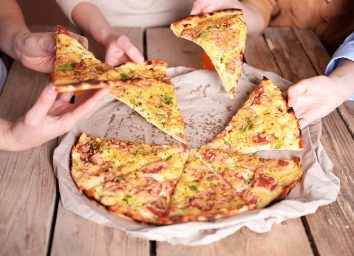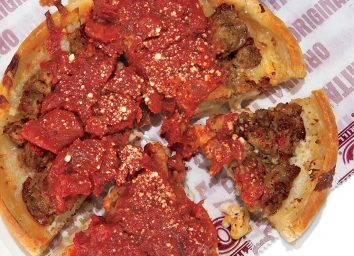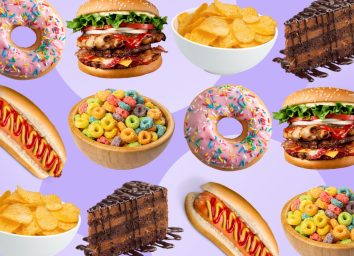15 Sneaky Ways Restaurants Add More Calories to Your Meals
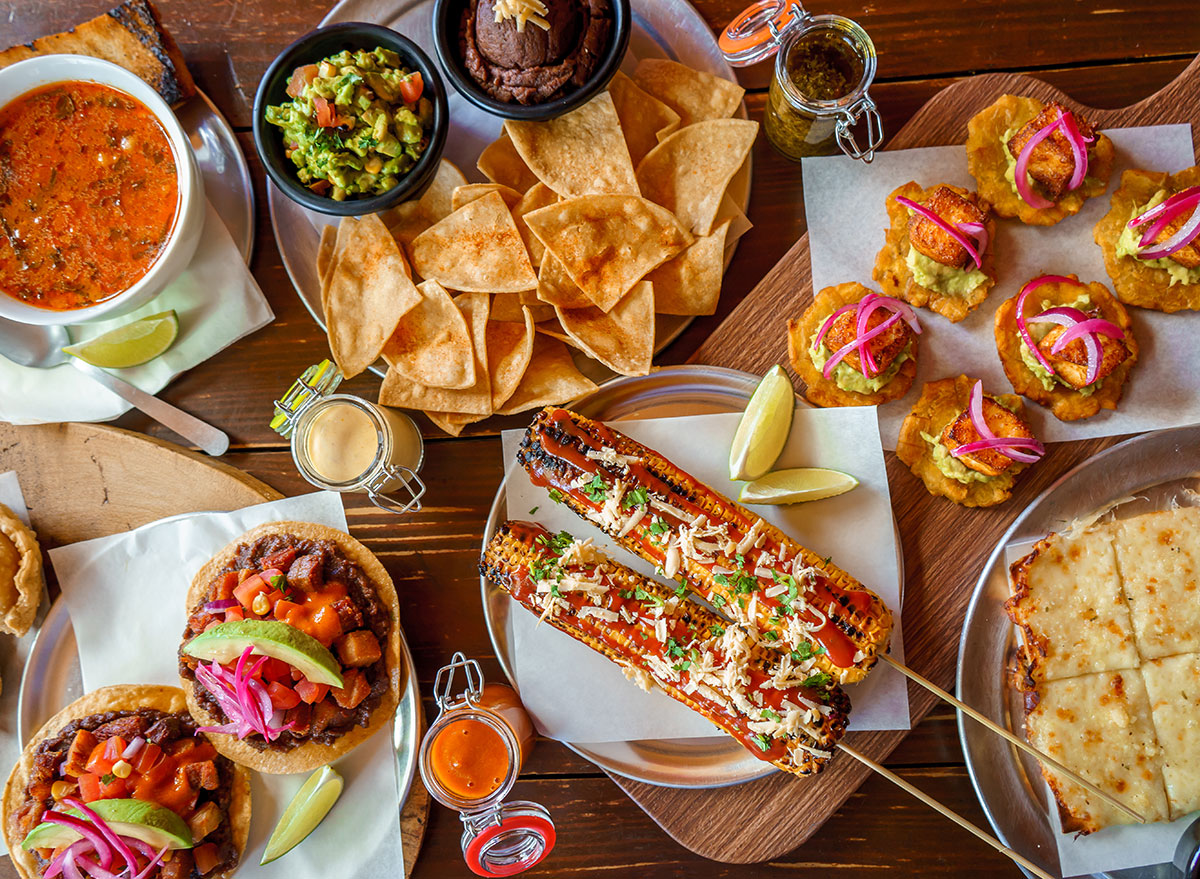
Eating out can be a fun way to socialize with friends after a long week of work, or if you’re just too tired to cook up something yourself. Hey, it happens! But if you’re trying to maintain a healthy diet, eating at a restaurant can be a bit of a nerve-wracking experience. See, there are plenty of sneaky ways restaurants are adding more calories to the meals you’re ordering, without you even realizing it.
Without preparing the food yourself, it’s difficult to know just what restaurants are using to cook their meals, and how they’re doing it. So in order to help you gain some control when you’re dining out, we talked with Amanda Sevilla, RDN, about some common ways restaurants add more calories to their menu items. That way, you can be properly prepared!
Larger portion sizes
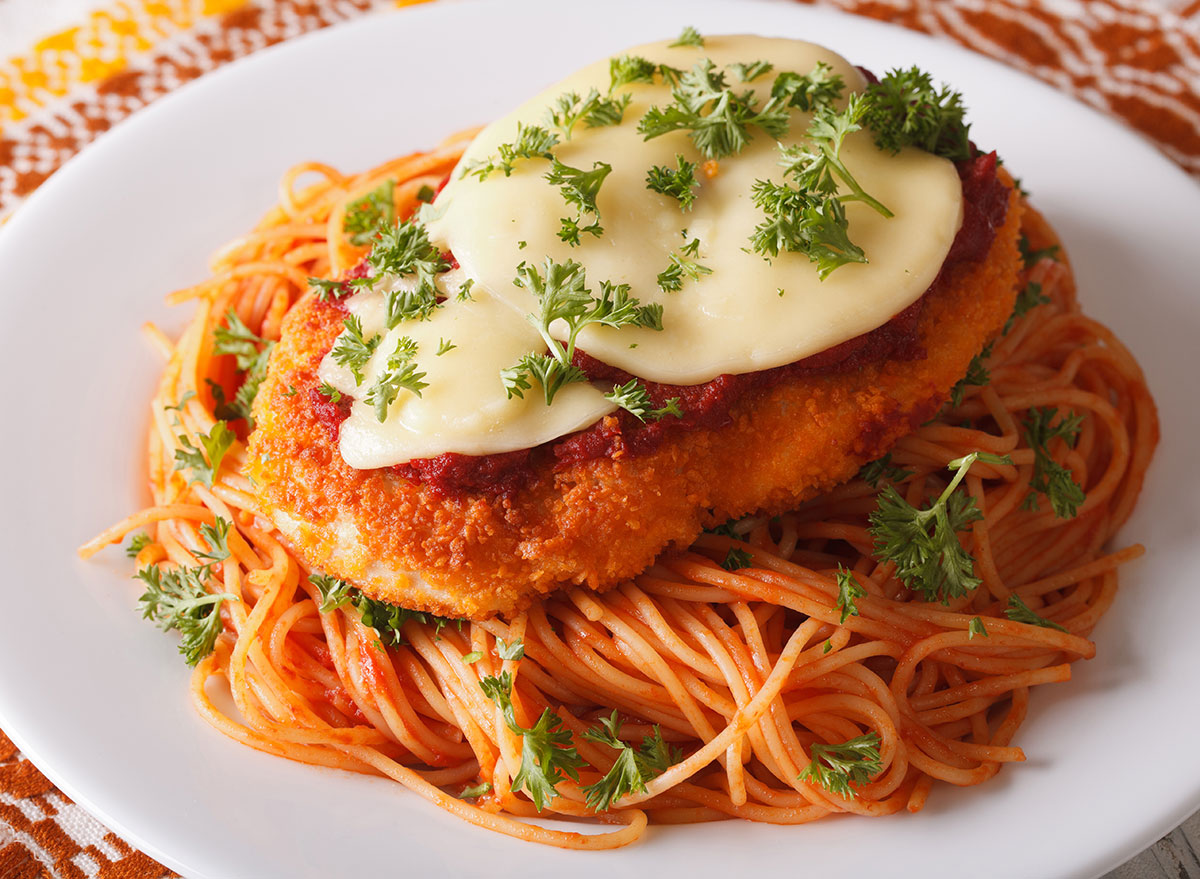
Most restaurants are guilty of serving huge portion sizes that are much larger than what you should consume in one sitting. On the one hand, it can be good for your wallet if you want to take home leftovers and make a few meals out of it. But it can be difficult to take home leftovers when you’re served a heaping plate of something delicious.
Sevilla says that restaurants can sometimes take advantage of the ways people were raised to eat. She says that restaurants often “serve larger portions or use larger plates, which can be a problem for people who were raised to ‘clean their plate.'” A lot of people grew up hearing that it was wasteful or rude to leave any food behind, and this can be an issue when you are served enormous portions.
Sevilla also states that those who “eat emotionally and haven’t resolved those habits” may especially feel inclined to finish those extra-large portions while eating at a restaurant.
Putting “deals” on the menu
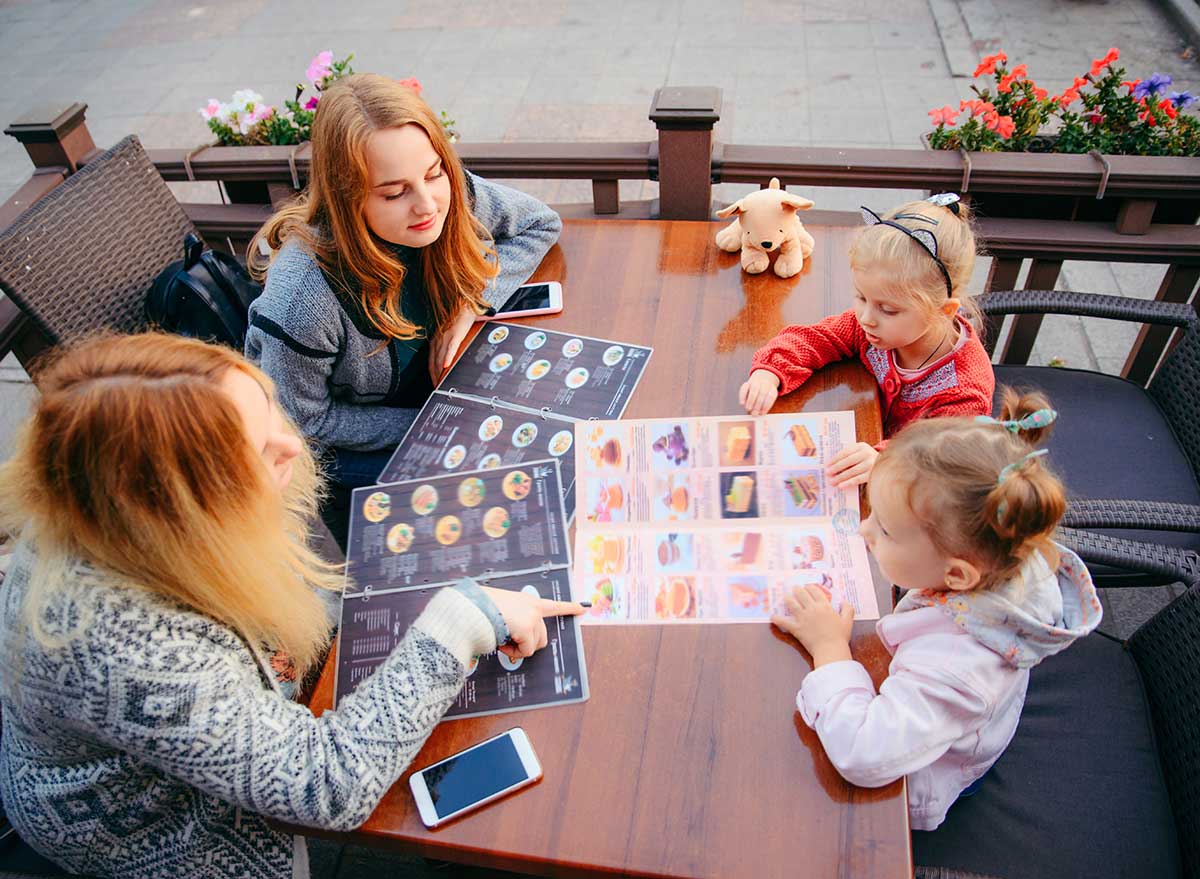
Everyone loves saving some money, right? Restaurants know exactly how to catch your attention with specific words on the menu in order to cater to the “more bang for your buck” mentality. Sevilla warns to pay attention to BOGO deals, add-ons with dinner purchases (free dessert or $5 margarita with dinner), and upsizing, aka “make it large for just a few cents more.”
It’s important to be aware of these types of deals that restaurants may throw on the menu so that when you do go out to eat, you can consume consciously. It’s understandable to want to save money, but remember that most of the deals you see on a menu will increase your calorie intake. If you’re looking for new dishes you can make at home instead, be sure to sign up for our newsletter to get daily recipes and food news in your inbox!
Cooking with extra oils
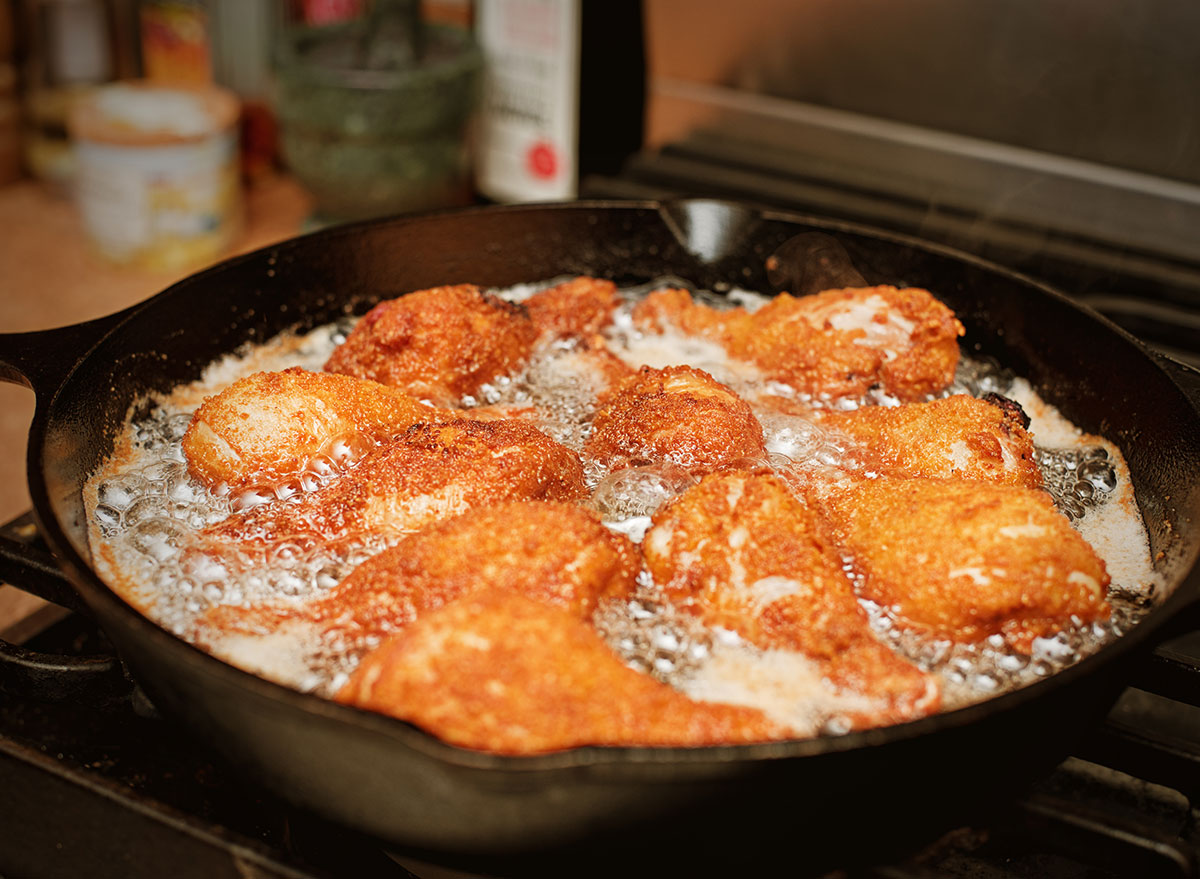
Sevilla believes that restaurants adding oils when they’re cooking is one of the quickest ways to add unnecessary calories to a menu item.
“Restaurants add oil to their food, add oil to a pan, and add oil to their grills for the purpose of cooking. But adding oil quickly adds to eating more calories since oil is 100% fat,” she says. This may be one of the trickiest ways that restaurants add calories because as consumers, we often don’t consider the oils being used when we order an item off the menu. And to Sevilla’s point, even grilled food can contain oils that we may be unaware of.
It’s also important to understand that “healthier” oils are always going to be more expensive, so you may not see these as much at restaurants. Oils such as extra virgin olive oil, coconut oil, and avocado oil are a few examples of healthier fats you can use when cooking. But you’ll rarely see these used in a standard restaurant because of their price point.
What you’ll usually find in restaurants is canola oil, vegetable oil, or other partially hydrogenated oils. These are the cheapest oils to cook with, and they have an extremely high burning point. Restaurants can easily cook large amounts of food with them without burning the oils. According to Harvard’s School of Public Health, these oils are trans fats and should be monitored. Trans fats have been found to increase inflammation, as well as increase chances of liver problems, heart attack, clogged arteries, and diabetes.
Free drink refills
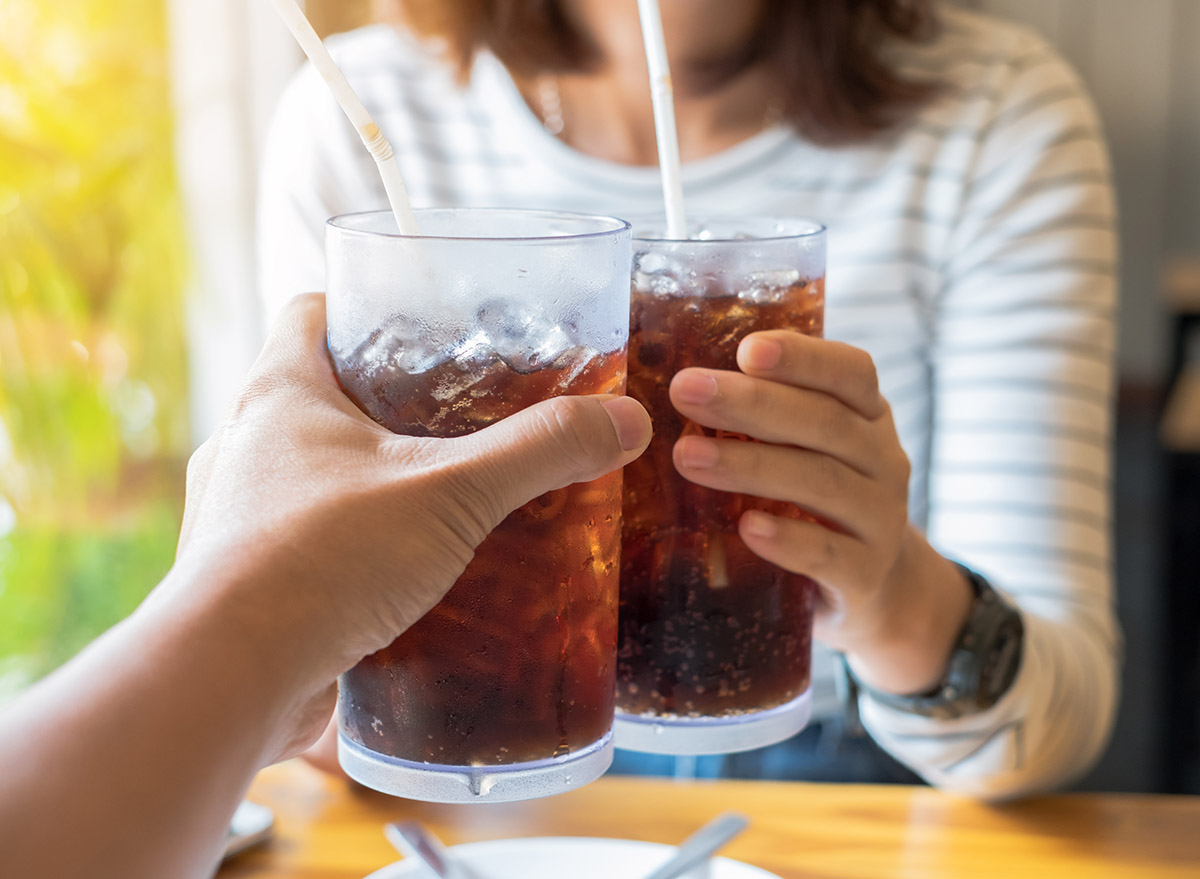
If you order a soft drink at a restaurant, you can expect the drink to keep on flowing the entire duration of dinner. Free refills are almost always expected at restaurants, and this money-saving “deal” adds on calories quicker than we may realize.
It’s no secret that the average soda contains 150-200 calories per 12-ounce serving. The key here is noting that most restaurants will not serve you a 12-ounce cup to begin with. You can expect your cup to be 16 ounces or larger, and by the time you add on a few refills, you could realistically be close to 450-600 calories before you ever even touch your food!
Hijacking the pleasure centers of your brain
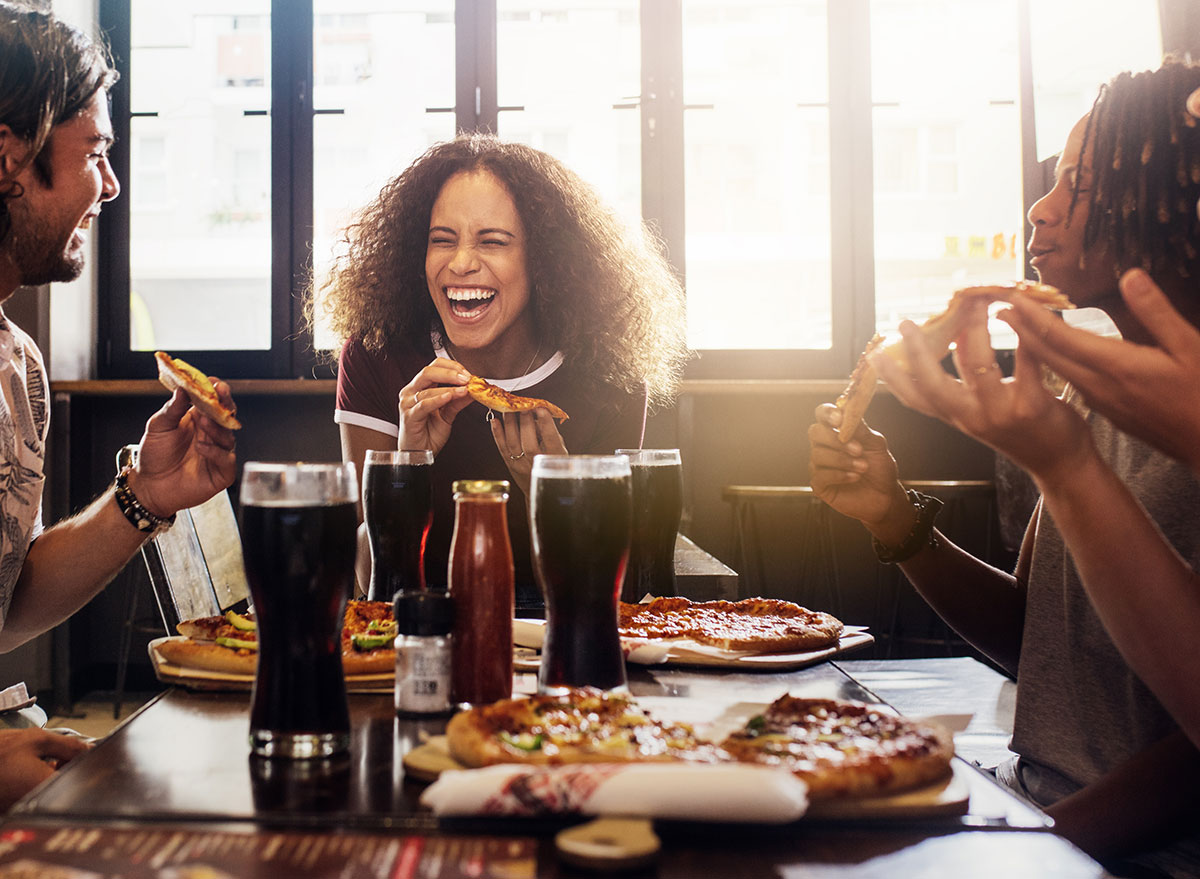
Restaurants know what they’re doing when they prepare your food. They want the food to be enjoyable, they want you to eat a lot of it, and they want you to come back for more.
According to Sevilla, “restaurants and other food industries have mastered the art of hijacking the pleasure center in our brain by combining the right amount of salt, fat, and sugar.” This can actually have a negative effect on how you listen to what your body needs, especially in the moment. When certain foods interfere with your pleasure center, “it overrides our satiety signals and encourages us to eat more.”
Adding salad dressings
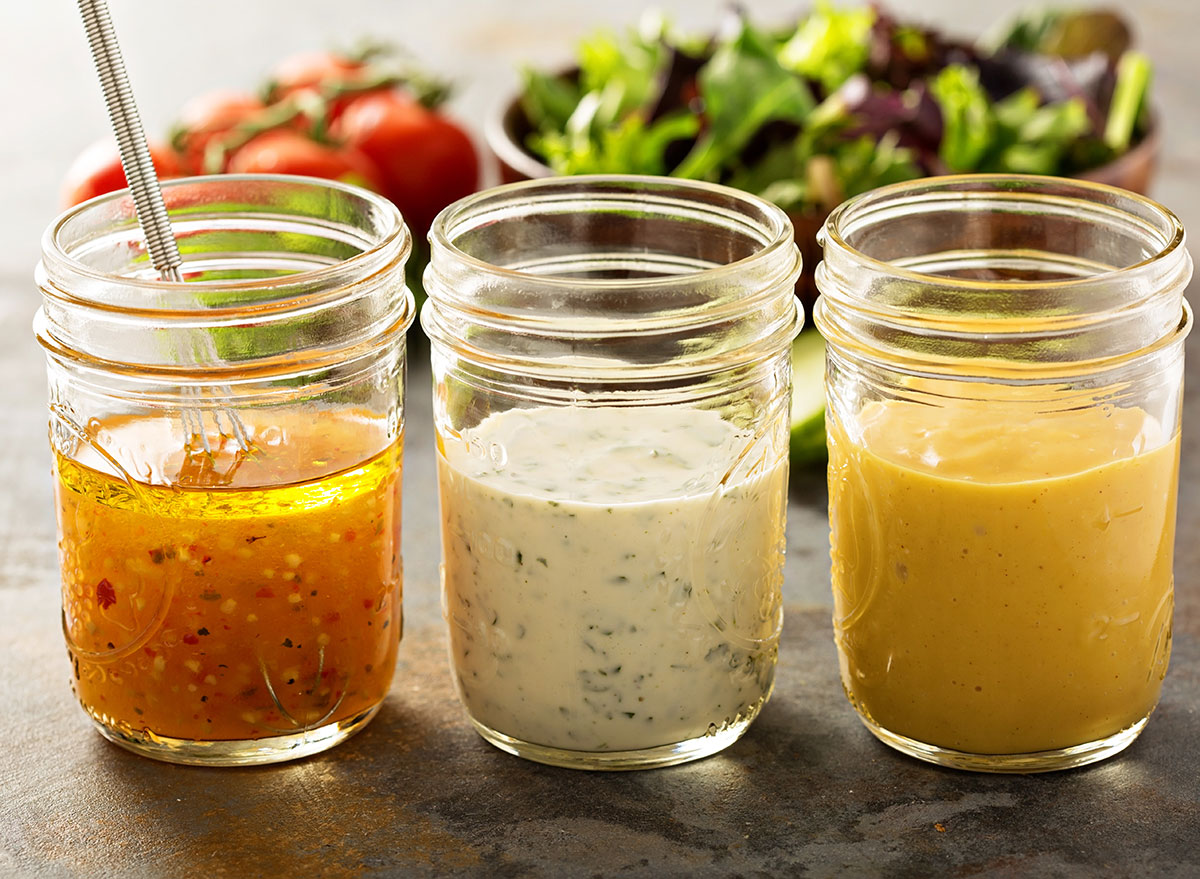
Salads may be one of the most deceiving items at restaurants. A lot of restaurants you’ll notice are now required to list the calorie count on their menu items, so you can see for yourself what the damage. Take Chili’s for example— their Quesadilla Explosion Salad comes in at a whopping 1,410 calories!
But even at “healthier” restaurants, salads can still be trouble because of the dressings added. Most salad dressings are packed full of fat, sodium, and processed ingredients. In fact, some nutritionists say you may as well be “chugging chocolate syrup.”
If you’re really craving the salad, just ask for their lighter dressing options. Sevilla believes that the best way to conquer the issue with salad dressings at restaurants is to “just ask for it on the side!”
Soup or salad with an entree
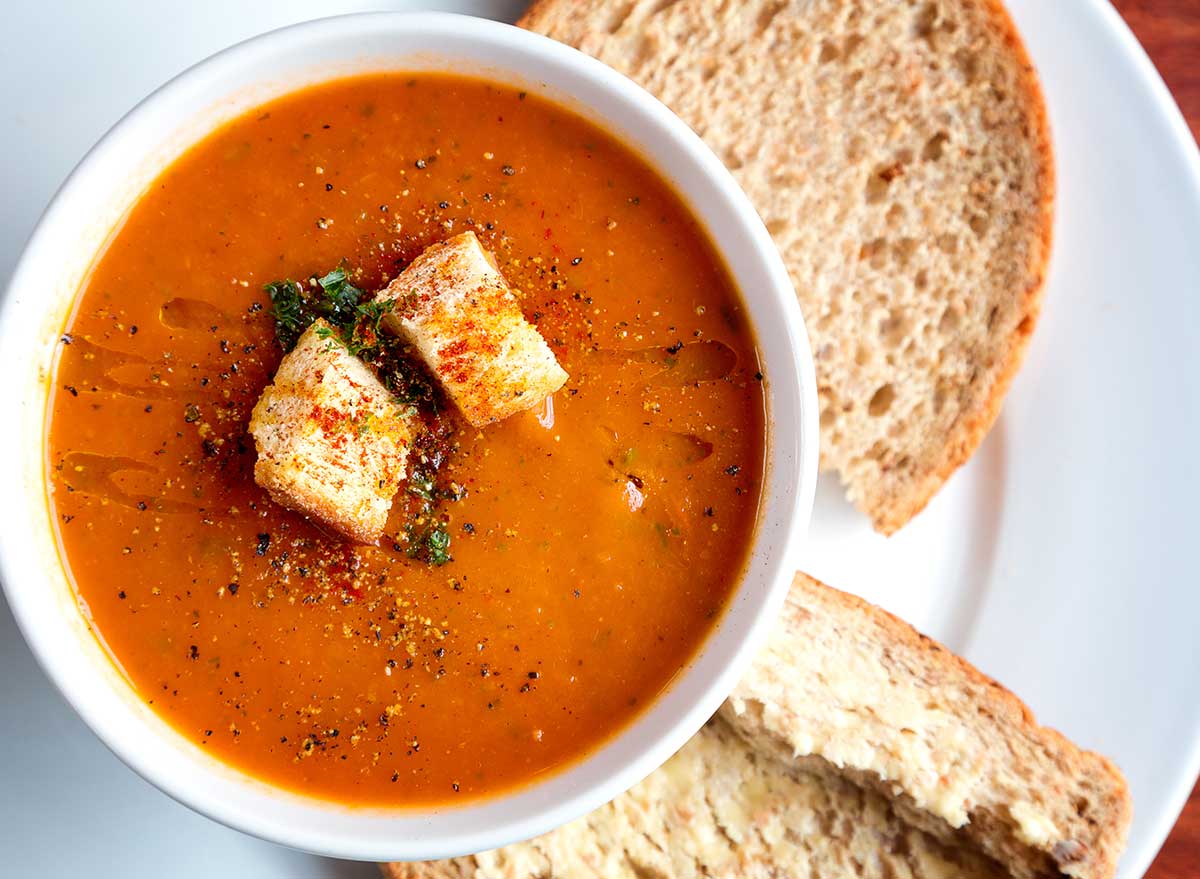
It might feel like the healthier choice to order a soup or salad before your entrée arrives as a way to get some nutritious food in before your main course. Sometimes, this can be the case. But you have to be careful about the types of soup you order, and keep in mind the type of salad dressing that’s used, too.
If you’re ordering soup and want to stay away from heavy calories, avoid creamier soups. These soups usually consist of milk, heavy cream, or a lot of cheese. As mentioned previously, salads can pack on extra calories. Even the small appetizer salads can add unnecessary calories and grams of fat because of the dressing. Don’t forget that you can always ask for the dressing on the side!
Using words like gluten-free, green, lowfat, or grilled
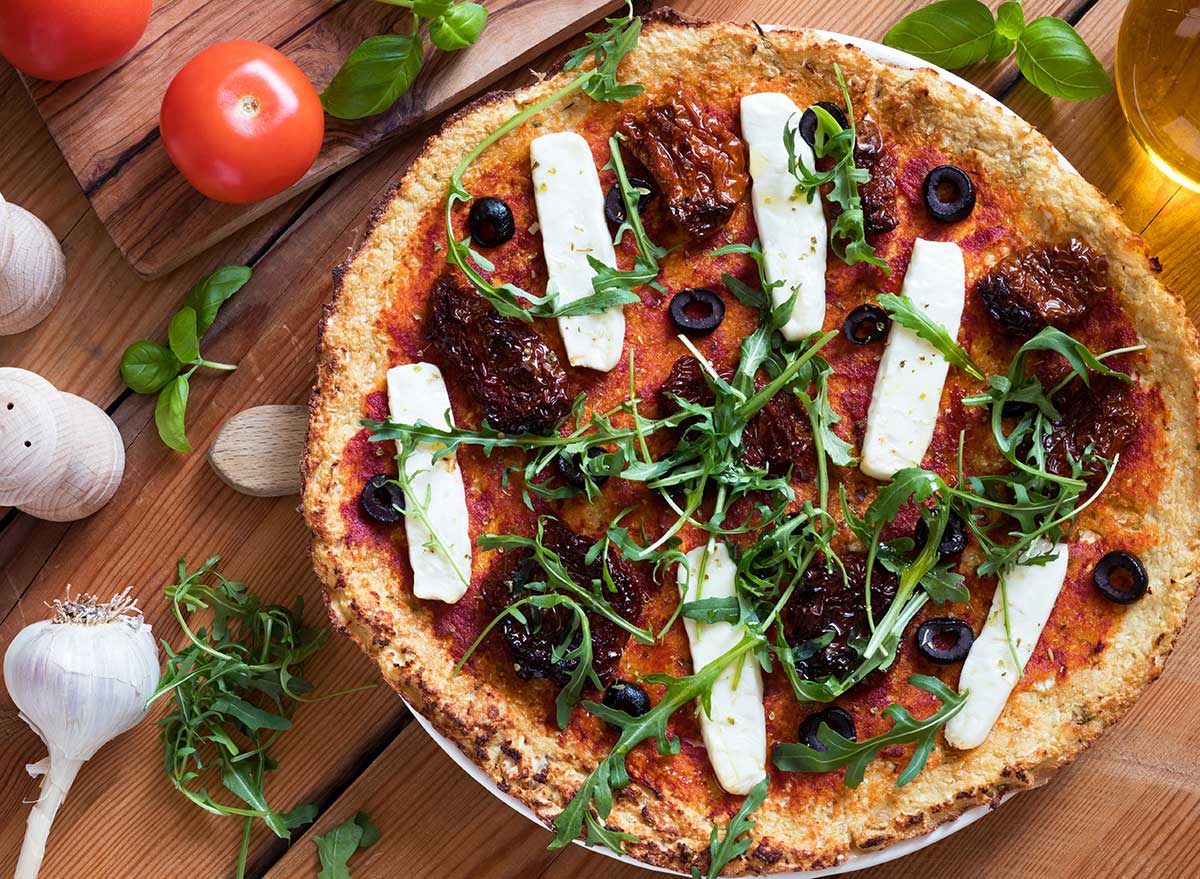
This one can be tough to swallow. Restaurants unfortunately are not always honest about their “healthier” food. For example, something that is low fat or gluten-free may be advertised on the menu as a “lighter” option. But in reality, restaurants may increase sugar or sodium levels to compensate for the lower fat and gluten content. Sevilla warns that restaurants often flaunt options such as lightened up, fresh, organic, or roasted. “They don’t necessarily mean less calories, they are just prepared differently,” she says. This can give us the illusion that there are far fewer calories in your choice.
Free bread or chips and salsa before the main course
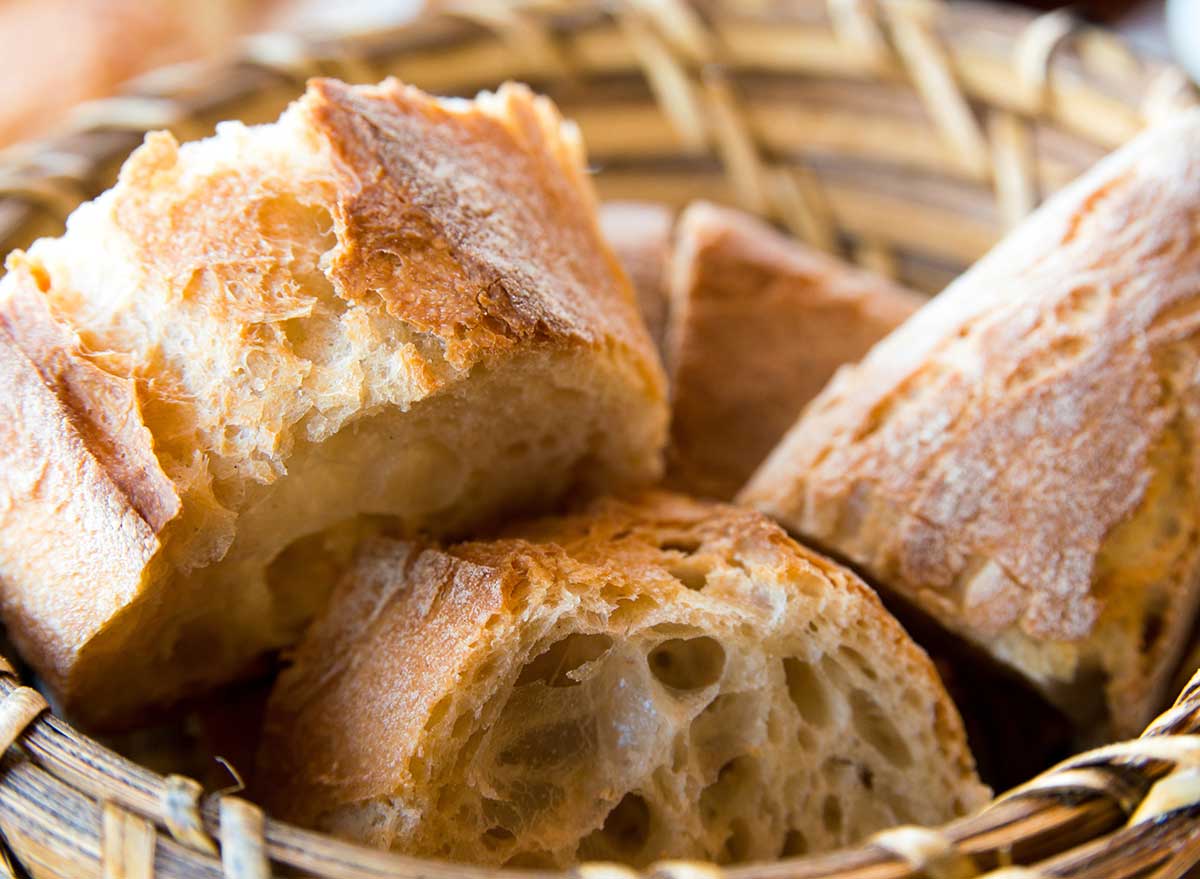
Complimentary chips and salsa, or the classic bread and olive oil before your entrée is a classic way that restaurants show their appreciation to their customers. As exciting as it is to see the server walking over with free bread or chips and dip, it can also be one of the quickest ways to pile on calories before your main course ever hits the table.
Sevilla suggests preparing for this by eating something filling and nutritious at home beforehand. “That way when you go out, you won’t feel like you need to eat everything they serve to be part of the socializing,” she explains. This can be a great way to avoid feeling extra hungry when you show up to dinner, which will allow you to more easily stick to your plan.
Adding shredded cheese to salad or pasta dish
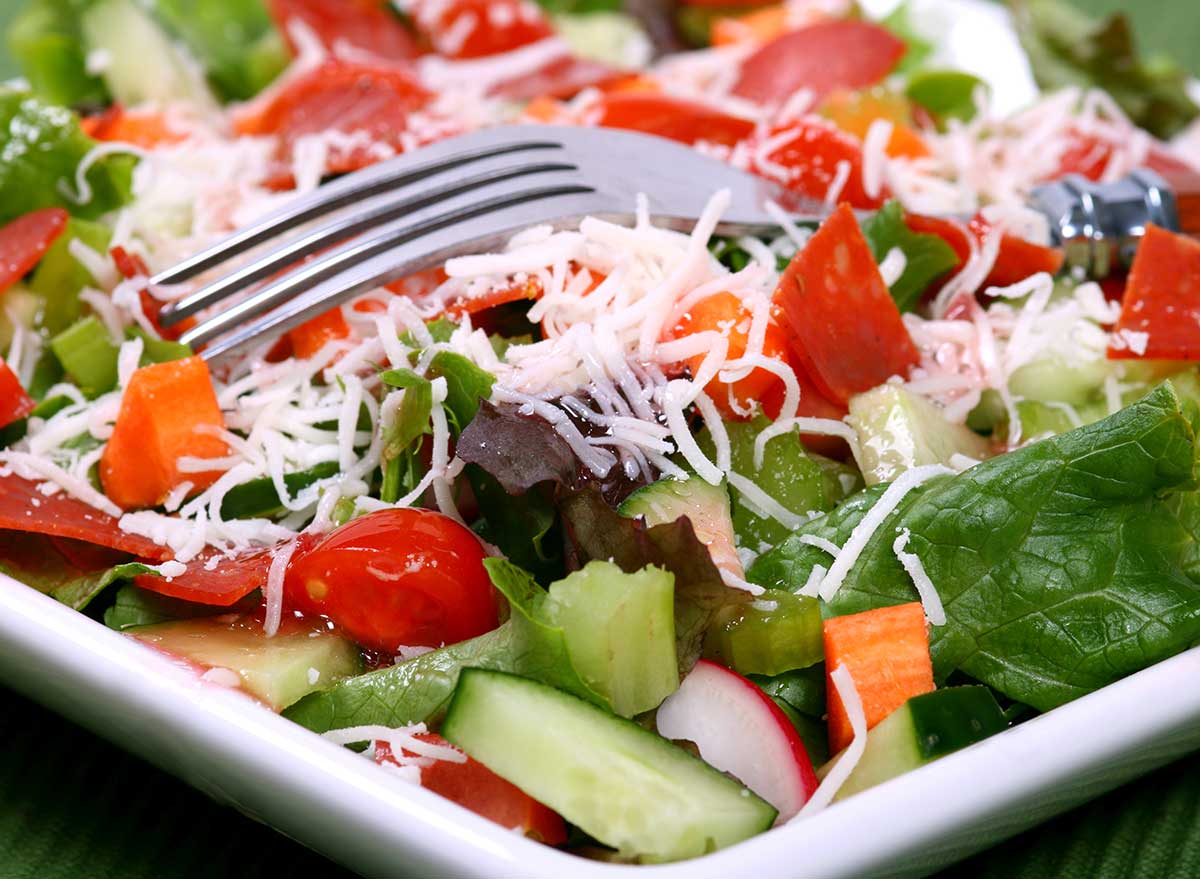
There’s that moment when your server brings you a delicious plate of pasta, or your fresh and crisp salad, and not far behind them is a cheese grater full of delicious cheese. They then ask if you want cheese on your dish and ask you to tell them when to stop. This small decision to add cheese to your entrée can add a good amount of calories without you even realizing.
See, restaurants know what they’re doing. They know that the novelty of freshly grated cheese will attract you at the table. If you want to avoid these extra calories, make sure to decide before the food comes out. Remind yourself of why you’re making the decision, and then you’ll be prepared when the time comes.
Dessert menu after every meal

Restaurants conveniently having the servers ask about dessert menus every time is another tactic used to try and convince you to eat more calories and spend more money. Some establishments will even tell the servers to bring the dessert menu before even asking if you want to see it, which may lead consumers to just check the menu out anyway. Sevilla brought up the “pleasure centers” earlier. If you’ve just consumed a meal full of fat, sugar, and calories, your satiety receptors are more than likely off. You may feel more intense cravings toward sugar, even if your body is trying to tell you it’s full. Try combatting this by connecting with yourself and asking if you’re truly hungry for dessert.
Menu engineers

Menu engineers and menu consultants are actual job positions that larger restaurants hire. The job of a menu consultant is to create a menu that sells as best as possible. According to the Cornell SC Johnson School of Business, menu engineers or consultants are trained to look at everything on the menu, down to the decimal, and number used in a listed price. For example, a menu consultant may choose to list something as $13 instead of $13.00 because at a quick glance, the first option actually comes across as cheaper than the second. Another tactic that a menu consultant may use is color choices that are associated with hunger. It’s important to be aware of some of these covert ways that restaurants may be encouraging you to order more food!
Descriptive words on the menu
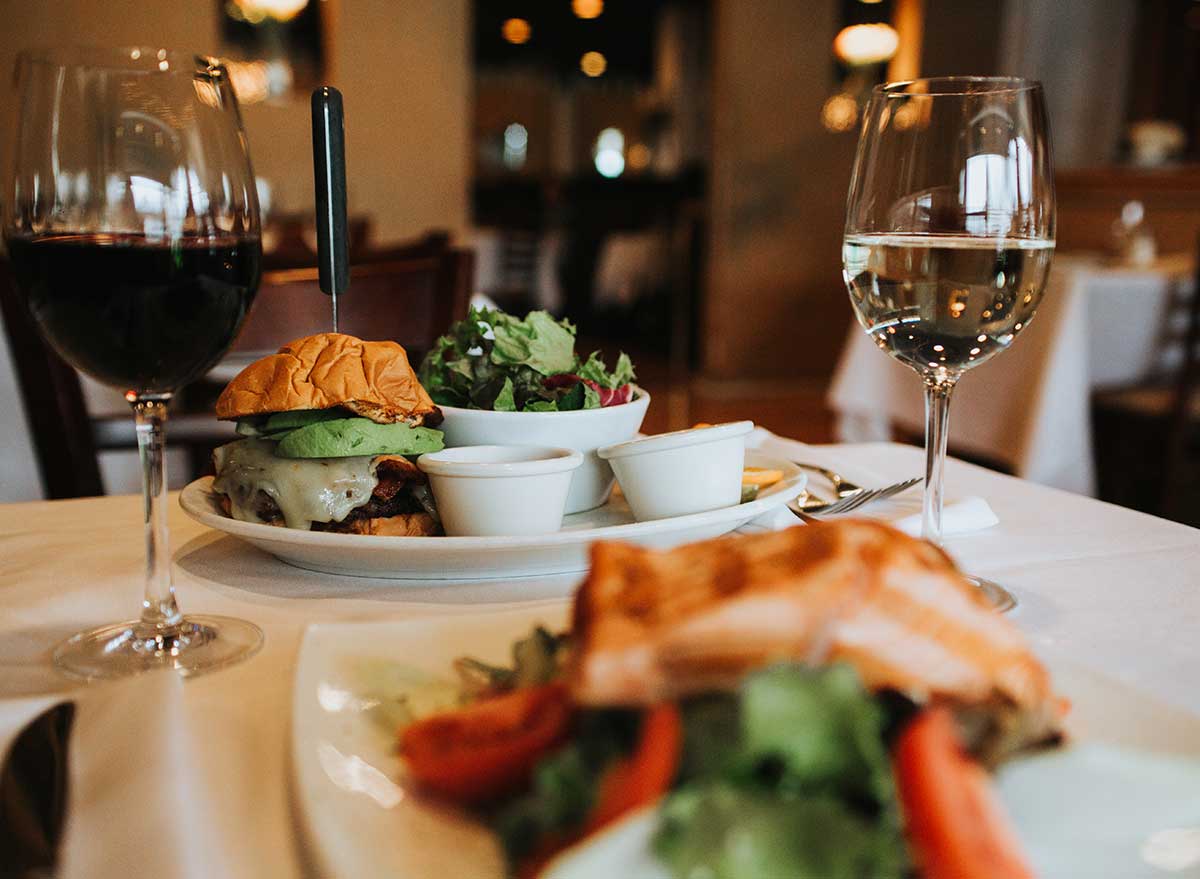
Similar to a menu consultant, you may have someone working for a restaurant as a copywriter. Their job is to sell and advertise food items so that consumers will buy them. According to the Association for Consumer Research, over 25% of items sold better when descriptive and detailed words were used to describe them on the menu. This is a very sneaky way of getting us to buy more food on the menu and consume more calories while we are there.
Happy hour food and drinks
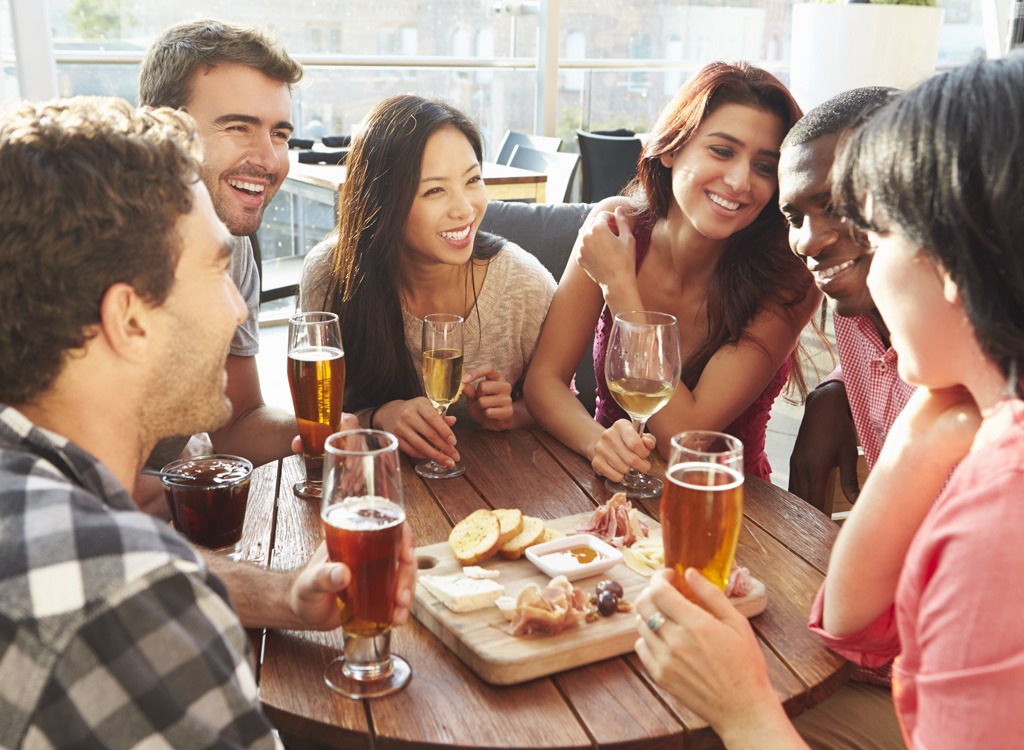
Restaurants know that if they can get you in for happy hour, they can get you to spend a good amount of money and consume a lot of calories. They may even be able to get you to stay for dinner! Many happy hour items are offered at a discounted price, which will have you drinking and eating more than you would if the prices were at their normal state. You may be getting more bang for your buck, but you could also consume twice as many calories.
It’s also helpful to look out for what types of items they’re offering on the happy hour menu. They might choose their cheaper appetizers, like flatbreads, fried foods, or queso dips. They’ll also probably offer their more sugary drinks like margaritas, daiquiris, etc.
Side dishes
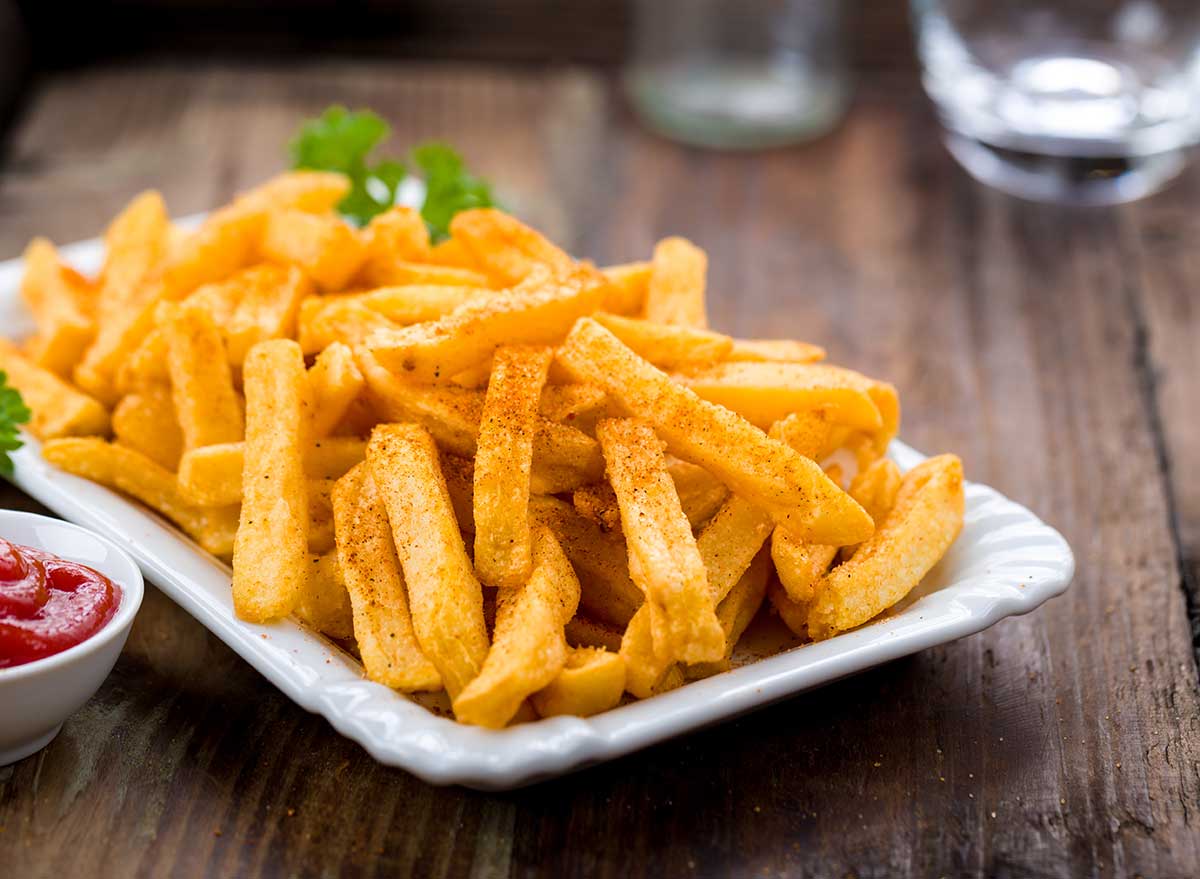
Everyone has grown accustomed to expect side items with entrées. Restaurants know this, and they play off of those expectations. It’s common to see a cheaper, high caloric item like French fries as an “included” side, with a fresher option like a salad or veggies coming with an upcharge. Sevilla suggests that if you’re going to get a side item, stick with something a bit more basic such as ” brown rice, corn, steamed veggies, or baked potatoes.”
Being prepared and understanding some of these covert ways that restaurants add on calories is important. This will help you feel more equipped to eat healthy the next time you’re out at a restaurant with friends or family.

